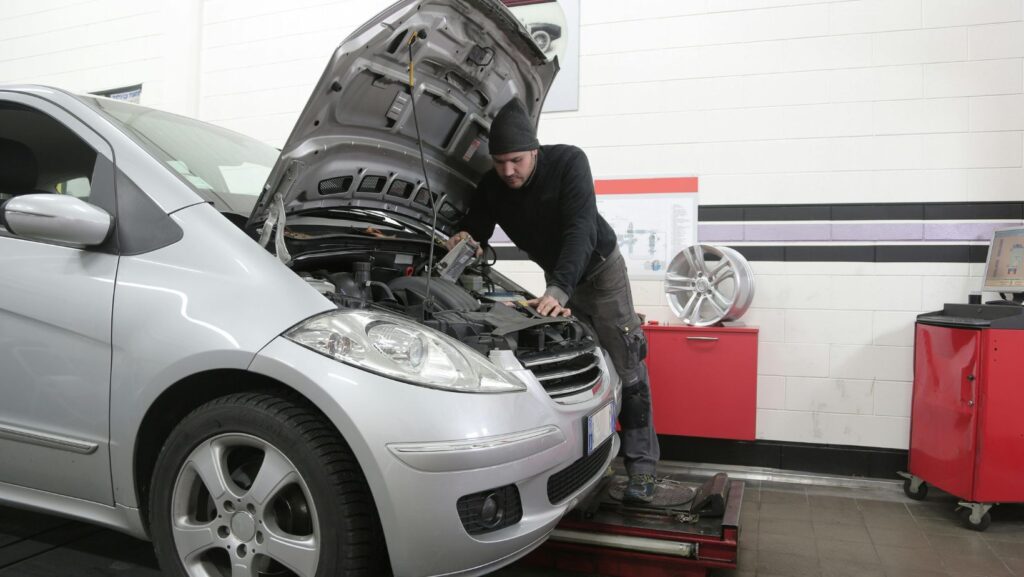
Apart from tools and a car jack, establishing a safe garage at home is vital for your DIY work on cars. It needs thoughtful planning, organizing, and ensuring the right equipment to keep both you and your vehicle protected. An arranged garage offers not only safety but also focus and productivity. Every pick, from light to tool placement, influences just how soon, easily, and safely your work can be. Here are essential points that are supposed to help you build a home garage for your car projects and reduce the risks involved.
Plan and Zone Your Space
You need to clearly divide the floor and allocate the right space for the car, tools, storage, workbenches, and detailing supplies. With all things set in place, the workflow will be faster and organized, and fewer tools and unnecessary clutter will be lying on the floor.
Think also about the ease of movement around the vehicle. Leave a three or four-foot allowance to make the door opening and moving of tools easy without bumping into walls. Refer also to the zoning laws on how to separate the chemical supplies, like paints and lubricants, from electrical tools. This prevents contamination while minimizing fire risks.
Know Your Limits and Know When to Call In the Pros
Performing basic tasks like oil changes, brake checks, or tire rotations is easier, but the more complex electrical work or diagnostic work should require professional training. Realize when to stop, as your own safety is at stake, and to prevent unnecessary damage to the car.

If you wish to learn, this can surely be done by taking up automotive technician training. Such learning takes you through the systems of the vehicle, diagnostic tools, and electrical components before tackling advanced repairs. In this way, much of the awe will be lifted off through knowing you can do it much more safely and better when working on the car.
Concentrate on Lighting and Ventilation
Dim or uneven lighting makes it hard to maintain precision on what you’re working on. Injuries or mistakes can also follow. Add portable task lights for close-up work and install bright LED luminaires that offer even lighting throughout your garage. For detailed tasks, magnetic lights that attach to metallic surfaces are very handy.
Good ventilation is equally important. Exhaust, paint, and cleaning chemicals can quickly fill incomplete confined spaces. You should have windows open, exhaust vents installed, or a fan system set up for ongoing ventilation. A well-ventilated garage would also keep up your health and considerably reduce excess condensation, rust, and unpleasant odors.
The Right Flooring and Spill Control
The garage floor has to withstand excessive traffic. Hence, it has to be made sturdy and easy to clean. Application of epoxy coating or rubber matting prevents staining and enhances traction to lower slipping risks. All those coatings also make it possible to identify, sooner or later, a leak or spill and prevent it from becoming a safety hazard.
Factor in also the spills, such as through investing in high-absorbent mats and cleanup kits. Make your recycling and disposal easy through marking all disposable containers for used coolants, oil, and other fluids. These actions help you make your garage ecologically friendly.
Install Safe Electrical Systems and Outlets
Modern vehicle maintenance calls for a lot of electrical equipment, including diagnostic scanners, battery chargers, and compressors. Particularly in wet environments or with concrete flooring, ensure that all outlets are grounded and have Ground Fault Circuit Interrupters (GFCI). Should a fault occur, GFCI outlets automatically shut off the power and create a loss of voltage to the plug, hence within the tools in use and the workplace.
It’s important to choose strong extension cords suitable for your equipment. Keep wires along ceilings or walls to allow passage without impediment. Ask a qualified electrician to guarantee the wiring is safe to handle if your setup has robust equipment or fresh illumination installations.
Organizing Tools and Personal Protective Equipment
Organization should be at hand when efficiency abounds. Maintaining everything in order thus calls for labelled containers, cupboard drawers, and wall-mounted pegboards. Placing the tools in strategic points lets you do away with minor accidents and stress. You could put the heavier tools lower, which also reduces the chance of an accident.
Boost your safety level with the proper PPE (personal protective equipment) to use during maintenance activities in the area devoted to garage work. Start with the basics like safety goggles, gloves for protecting the hands, steel-toed shoes, and earplugs. An extinguisher should be handy around where you work, sitting on Lucite on the benchtop.
Endnote
Every DIY car-improvement project needs a garage that is safe and wonderfully designed. Zone clear, brightly lit, durable floors, secure electrical systems, and organized tools create a workspace designed for safety and efficiency. After preparation and respect for limits, the garage becomes a dependable environment for assured car care for many years.












